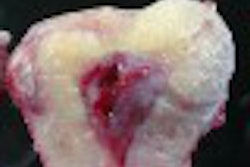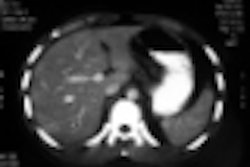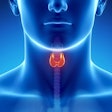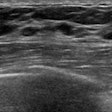CHICAGO - In early-stage research, doctors demonstrated that the focused energy of ultrasound -- pinpointed to within millimeters of its target by MRI -- destroys the fibroids but doesn’t affect healthy tissue. Dr. Clare Tempany, associate professor of radiology at Harvard Medical School and director of clinical MRI at the Brigham and Women's Hospital, Boston, said using the two modalities is "a perfect match. Fibroids are very common and easy to see with MRI. Focused ultrasound is noninvasive and can be monitored with MRI."
At an RSNA press conference on Monday, Tempany said her group has conducted procedures on nine women who were scheduled for hysterectomies due to fibroids, with the effects of focused ultrasound examined after the hysterectomy surgery. Tempany said two of her patients suffered cramp-like sensations during the four-hour procedure. Two patients also noticed some pimpling on the skin when the ultrasound was focused. Overall, the procedure was well tolerated and the women, aged 36 to 54, were able to resume normal daily activities without hospitalization. Some of the women required light sedation during the procedure; others required no analgesics during or after the procedure.
Patients underwent pre-treatment evaluation with a 1.5-tesla MR scanner to identify and define the target fibroids. The ultrasound device, developed by Insightec-TxSonics of Dallas, then delivered heat to the target based on the fibroid volume. Tempany explained that just as a magnifying glass focuses the sun's energy on paper to start fire, the ultrasound focuses its sound waves at a precise point in the uterus. The waves harmlessly pass through the skin but heat up the fibroid until its tissue is destroyed. The heat also appears to destroy blood vessels supplying the fibroid, extending the damage to the tumor without harming healthy tissue, she said.
Worldwide, the procedure has been performed 28 times. An Israeli team is performing the procedure in lieu of hysterectomies and monitoring to determine possible adverse events. Early next year Tempany plans to study 20 to 30 women with symptomatic fibroids using focused ultrasound as an alternative to hysterectomy. As many as 200,000 women undergo hysterectomy each year in the United States due to symptoms caused by fibroids, said Dr. James Spies, associate professor of radiology at Georgetown University School of Medicine, Washington, DC.
"We are obviously still in the early days of this [focused ultrasound] procedure," said Spies. "This looks very promising but we really have to wait until procedures are done so that long-term symptoms can be evaluated." He noted that simply destroying a particular fibroid might not translate into pain relief.
Fibroids can cause bleeding and pressure in the uterus, which can cause pain affecting the bladder and nerves in the legs. Symptomatic women with more than five fibroids would still likely be candidates for hysterectomy or other invasive procedures such as uterine fibroid embolization, Tempany said. Spies said he expects the focused ultrasound procedure to become a complementary treatment for fibroids, giving doctors another weapon against the painful disorder.
By Edward Susman
AuntMinnie.com contributing writer
November 26, 2001
For the rest of our coverage of the 2001 RSNA meeting, go to our RADCast@RSNA 2001.
Copyright © 2001 AuntMinnie.com



















